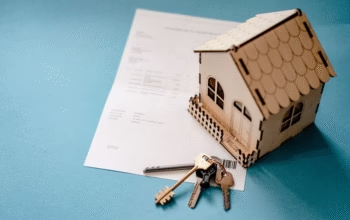Refinancing in a Rising Interest Rate Market: Strategies That Work
When interest rates are low, refinancing is a no-brainer. But what happens when they start climbing?
Most homeowners assume that rising rates kill any chance of getting a good refinance deal. In truth, refinancing during a high or rising interest rate environment is not only still possible — it can be strategic. The trick is knowing why you’re refinancing and which strategies actually work when rates are going up, not down.
In this article, we’ll explore creative and lesser-known refinancing tactics that savvy borrowers use to navigate rising rate environments. Whether you’re managing debt, reducing risk, or planning long-term, the goal is the same: protect your home, your wallet, and your future.
Why Refinancing Still Matters — Even with Higher Rates
Let’s start by breaking a popular myth: Refinancing only makes sense when rates are falling.
That’s not always true. In fact, there are several reasons refinancing can still make sense even when rates are higher than a few years ago:
- You need to consolidate high-interest debt (like credit cards or personal loans)
- You want to switch from an adjustable-rate mortgage (ARM) to a fixed-rate loan to avoid future hikes
- You’re going through divorce or co-ownership separation
- You’re looking to tap into home equity for renovation or emergency costs
- You want to shorten your loan term and build equity faster
The key is using the right refinance strategy for your unique situation, not just chasing a lower interest rate.
Strategy #1: Focus on Total Cost, Not Just the Rate
Most people shop for refinancing based solely on the interest rate, but that’s only part of the story. In a rising market, the smart move is to look at your total cost over time.
Ask Yourself:
- What are the closing costs?
- How long will you stay in the home?
- Will refinancing save you money over the life of the loan, not just monthly?
For example, let’s say you’re refinancing from a 3.5% rate to a 5.75% rate, but you’re also consolidating $50,000 in credit card debt that’s charging 22% interest. Even with a higher mortgage rate, you could save thousands annually in interest.
Pro Tip: Use a refinance breakeven calculator to measure how long it will take to recover your upfront costs and whether it’s worth it long term.
Strategy #2: Consider a “Blended Rate” Refinance
When you refinance to combine mortgage and personal debt (like auto loans or credit cards), you’re essentially creating a blended rate — a new rate that averages out across all the debts you’re paying off.
Even if the new mortgage rate is higher than your original home loan, it might still be lower than the average of your combined debts, which could make refinancing a strategic move.
For example:
- Original Mortgage: $250,000 at 3.25%
- Credit Card Debt: $40,000 at 22%
- New Loan: $290,000 at 6.0%
In this case, your interest payments drop significantly overall, even if your mortgage interest rate increases. This blended strategy works especially well for homeowners juggling multiple high-interest debts.
Strategy #3: Switch from Adjustable to Fixed Rate
If you have an adjustable-rate mortgage (ARM), rising rates can be a ticking time bomb. Once your initial fixed term ends, your payments can spike—sometimes dramatically.
In a rising market, it often makes sense to refinance into a fixed-rate loan, even at a higher rate. Why?
- Predictability: You know your monthly payment won’t increase later.
- Protection: You avoid the shock of future rate hikes.
- Peace of mind: Budgeting becomes easier with a consistent monthly amount.
Bonus Insight: If you’re still in the early fixed period of your ARM, some lenders may offer streamline refinance programs that reduce paperwork and costs.
Strategy #4: Use a Cash-In Refinance to Reduce Your Rate
This is a lesser-known trick: cash-in refinancing.
Instead of pulling equity out, you put cash in at closing to:
- Lower your loan-to-value (LTV) ratio
- Qualify for better terms
- Potentially drop PMI (Private Mortgage Insurance)
- Reduce your loan balance to get into a different rate tier
This strategy is ideal for people who’ve come into extra money (a bonus, inheritance, or savings) and want to invest it back into their mortgage.
When it works best:
- You’re close to hitting 80% LTV
- You want to qualify for a better rate despite higher market rates
- You’re planning to stay in the home long term
Why it’s unique: Most people only think of refinancing as pulling money out. Using it to pay down debt during a rate hike gives you an edge.
Strategy #5: Refinance to a Shorter Term
A 30-year mortgage at a rising rate might feel like a trap. But a 15- or 20-year refinance could still give you a better rate, build equity faster, and save interest over time — even if monthly payments go up slightly.
Benefits include:
- Lower total interest paid
- Faster homeownership
- More attractive loan terms even in rising-rate markets
The shorter the term, the lower the risk for lenders — which means you get a lower rate compared to longer-term loans.
Reality Check: Your monthly payment will increase, but if your income can support it, the long-term savings can be substantial.
Strategy #6: Go Local or Non-Traditional
In national rate hikes, big banks tend to follow market trends strictly. But local credit unions, community banks, or digital-first lenders might offer more flexibility or creative underwriting.
Why this works:
- They may use in-house programs not tied strictly to market rates
- Some offer portfolio loans with personalized terms
- Lower fees or closing costs can offset a slightly higher rate
Also, non-traditional lenders like fintech mortgage companies may use AI-driven evaluations or alternative credit metrics to offer more competitive terms for certain borrowers.
Strategy #7: Look Into Interest-Only or Hybrid Loans
Though not ideal for everyone, interest-only or hybrid ARMs can be useful in specific rising-rate situations — especially if:
- You’re not planning to stay in the home long term
- You need lower monthly payments now
- You expect your income to increase in the future
These loans offer low payments during an initial period (typically 5-10 years), after which full amortization kicks in.
Warning: These loans carry risk. But if you plan to sell or refinance before the adjustment period, it can be a smart short-term play.
When NOT to Refinance in a Rising Rate Market
Sometimes, the best strategy is not refinancing — especially if:
- Your current rate is significantly lower than any available rate
- You plan to move or sell the home within 1-2 years
- You don’t have enough equity to qualify without PMI
- The closing costs outweigh any financial benefit
In these cases, consider alternative options like:
- Making extra payments on your current mortgage
- Setting up a HELOC (Home Equity Line of Credit) instead of refinancing
- Renegotiating terms with your current lender
Final Thoughts: Refinancing in a Rising Rate World
Rising interest rates aren’t the end of refinancing opportunities — they’re just the start of a more strategic conversation. While traditional rate-chasing may be off the table, value-chasing is still very much alive.
Think beyond the rate:
- Blend debts and lower your total financial burden
- Secure stability in a volatile market
- Shorten your term to get out of debt faster
- Tap equity for investments that increase your net worth
The key to successful refinancing in this environment isn’t chasing the past—it’s building your future with the right tools today.
Are you currently considering refinancing but not sure which strategy fits your goals? Let us know in the comments or reach out to a financial advisor to tailor a plan that works for your income, equity, and long-term vision.



